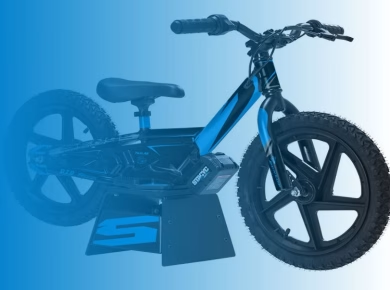When considering the installation of a well in Vermont, one of the foremost questions that arises is, “What depth guarantees clean water year-round?” This inquiry not only reflects a concern for access to water but also touches on the vital aspects of health, safety, and sustainability. Vermont, known for its picturesque landscapes and plentiful natural resources, also has its unique geological challenges. Understanding these challenges is crucial for anyone looking to drill a well that provides clean, potable water throughout the year.
Understanding Vermont’s Geological Landscape
Vermont’s geology is a mix of ancient rock formations, glacial deposits, and varying soil types. The state is primarily composed of metamorphic and sedimentary rocks, which can greatly influence well water quality and availability. In many areas, particularly in the Green Mountains, the bedrock is hard and can make drilling challenging. Conversely, in other regions, you may encounter softer sedimentary layers that could yield a different quality of water.
The depth at which you can find clean water in Vermont is not uniform across the state. It can vary significantly depending on local geology, hydrology, and seasonal changes. Therefore, understanding these factors is essential for determining the optimal depth for drilling your well.
What Depth is Ideal for Well Drilling?
While there is no one-size-fits-all answer to the depth question, a general guideline suggests that residential wells in Vermont typically range from 100 to over 400 feet deep. Most homeowners find that drilling between 150 to 250 feet often strikes the right balance for quality water. However, several factors come into play when determining the optimal depth.
Local Water Table Variations
The water table can fluctuate based on seasonal changes and local precipitation patterns. In spring, for instance, the water table may rise due to melting snow and increased rainfall, while in the summer months, it may drop. Understanding your specific area’s water table levels can inform your drilling depth. Consulting with local well drillers or the Vermont Department of Environmental Conservation can provide valuable insights.
Types of Wells
There are primarily two types of wells used for residential purposes: drilled wells and dug wells. Drilled wells are more common due to their depth and ability to tap into aquifers. Dug wells, on the other hand, are shallower and generally less reliable for long-term water quality. If you’re looking for a steady and clean water supply, a drilled well is typically the better option.
The Importance of Aquifer Characteristics
Vermont is home to various aquifers, each with distinct characteristics. Aquifers can be classified as confined or unconfined. Confined aquifers are located beneath layers of impermeable rock, while unconfined aquifers are closer to the surface and more susceptible to contamination. For reliable and clean water, drilling into a confined aquifer is often ideal.
Consulting Local Experts
Before making any decisions, it is highly recommended to consult with local well drilling experts. They possess the knowledge of regional geology and can provide insights into the specific depth at which you are likely to find clean water. Additionally, they can help you navigate the permitting process, which is crucial in Vermont due to strict regulations surrounding well installation.
Water Quality Testing
Once you have successfully drilled your well, the next step is ensuring the quality of the water. It is essential to conduct regular water quality testing to check for contaminants such as bacteria, nitrates, and heavy metals. In Vermont, the Department of Health provides guidelines on how often you should test your well water — at least once a year is a good rule of thumb.
Common Contaminants in Vermont Wells
Certain contaminants are more prevalent in Vermont due to agricultural runoff, septic systems, and other environmental factors. For instance, nitrate contamination is a common concern in agricultural areas. Testing for coliform bacteria is also crucial, as these microorganisms can indicate fecal contamination, which can pose severe health risks.
Seasonal Considerations
Seasonal changes in Vermont can also affect well water quality. During the spring, increased runoff can lead to higher contamination levels. Conversely, during the winter months, freezing temperatures can affect the functionality of your well. It’s important to have a well-maintained well system that can withstand these seasonal variances.
Winterization Tips for Your Well
If your well is located in an area prone to freezing temperatures, consider winterization techniques to prevent freezing and ensure year-round access to water. Insulating well components, ensuring proper drainage, and maintaining a consistent water flow can significantly enhance the reliability of your well during the winter months.
Maintaining Your Well for Long-Term Quality
Once your well is drilled and operational, ongoing maintenance becomes crucial for ensuring the quality and safety of your water supply. Regularly inspecting and maintaining your well system can prevent issues that may arise over time.
Preventing Contamination
To protect your well from contamination, implement a buffer zone around the wellhead. This area should be free from livestock, waste disposal, and any potential pollutants. Additionally, ensure that the well cap is secure and that there are no cracks or openings that could allow contaminants to enter.
Conclusion: The Path to Clean Water
In summary, the depth required to guarantee clean water from a well in Vermont can vary based on numerous factors, including local geology, water table levels, and the type of well you choose to install. Consulting with local experts, understanding the characteristics of the aquifers in your area, and conducting regular water quality tests are all essential steps in ensuring a reliable and safe water supply.
Investing in a well is not just about accessing water; it’s about securing the health and well-being of your household. By being informed and proactive, you can navigate the complexities of well drilling in Vermont and enjoy clean, drinkable water year-round. Whether you’re new to the area or have been here for years, understanding your water source is a critical component of sustainable living in this beautiful state.


